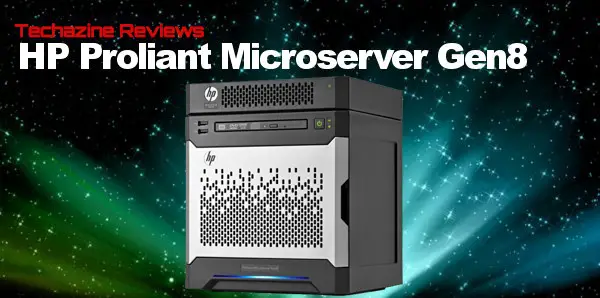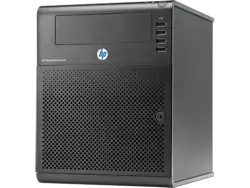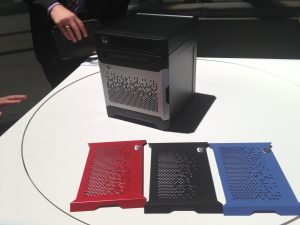
I’m a big fan of product history, how products develop and come to life. This is the story of how the HP Proliant MicroServers came to be. I spoke with Shad Madina, Group Manager, Portfolio Planning and Solutions at HP and he offered a bit of insight on how HP developed its MicroServer.
Why a MicroServer
When the folks at HP began looking at the market, it saw a large amount of growth in the small to medium business market and that sparked the question – how does HP target this fast growing segment? According to Madina, HP staff began researching small and medium businesses and found that most of the server options they had within their price range were stripped down versions of larger servers, which often removed great functionality for the sake of price. HP also found that the majority of small businesses bought their technology through channel partners or as a bundled solution along with software and services while looking to solve a particular problem.
In addition to buying habits, HP also found that most small and medium businesses placed these servers under a desk or on a tabletop and that they were not found in a datacenter or server room. This made traditional servers an imperfect fit because of the noise and heat they produce was not well suited for where they were being placed.
So HP began developing a new server with different trade-offs. They wanted to create a server that would meet small and medium business needs without compromising function. The new server would need to be quieter than a normal server, be channel friendly, and be power and heat conscious.
Meet the MicroServer
 With this information, HP introduced the first Proliant MicroServers in 2010. Equipped with AMD Athalon N36L, N40L, and N54L processors as options, each unit could add up to 8TB of storage (4 x 2TB drives) and 8GB of DDR3 ECC RAM. It included 6 USB 2.0 ports, 1 eSATA port and 1 Gigabit Ethernet portand an optional remote management card akin to iLO. The first MicroServer was quiet, touting less than 21db of noise emitted and it ran on standard 110 power.
With this information, HP introduced the first Proliant MicroServers in 2010. Equipped with AMD Athalon N36L, N40L, and N54L processors as options, each unit could add up to 8TB of storage (4 x 2TB drives) and 8GB of DDR3 ECC RAM. It included 6 USB 2.0 ports, 1 eSATA port and 1 Gigabit Ethernet portand an optional remote management card akin to iLO. The first MicroServer was quiet, touting less than 21db of noise emitted and it ran on standard 110 power.
While the units met all of HP’s objectives, they were not a huge hit in the US. They proved to be much more successful in Europe but the decision to equip them with AMD processors was often a sticking point for domestic customers.
HP learned a number of lessons from customers with the first models of MicroServer. Customers found use cases beyond HP’s original intentions, with many IT professionals choosing to use the MicroServer as a virtualization hardware for small deployments or home labs.
Meet the Gen8 MicroServer
This past summer, HP introduced the Proliant MicroServer Gen8 to the public. The new model integrated a number of lessons learned from the previous models. For the new generation, HP moved to Intel processors, choosing a dual-core Celeron processor for the low-end and a Core i3 processor for the higher end model. The standard RAM configuration is 2GB with a higher RAM limit at 16GB to better accommodate the virtualization use cases and needs for more RAM in database or other uses. The Gen8 MicroServer also include dual Gigabit network adapters onboard with one expansion PCI slot. The new model still comes with 4 drive bays, but now supports 3TB SATA drives for up to 12TB of total storage. With these changes, HP is betting on better results domestically by accommodating more uses it’s customers found with the previous generation.
HP added an on-board iLO port as standard configuration on each unit. Unlike the optional remote management card, the iLO would be the same iLO 4 that HP features across the entire Proliant Gen8 line. They also introduced a licensing level called iLO Essentials for $149 which gives MicroServer and small to medium business customers core iLO functionality they want without the increased cost of iLO Advanced licensing. iLO Essentials includes remote console, virtual media and email notifications from the system. iLO4 is also the underlying technology which allows the MicroServer Gen8 to connect with Insight Online, HP’s cloud support service, and enables HP Insight Remote Support.

HP Proliant MicroServer Gen8 on display at HP Discover 2013. In the foreground, there are 3 color options available for the door, including the standard silver found on all Proliant Gen8 models.
The entire Proliant Gen8 line has a prominent design feel featuring aluminum bezels on each model that cover the drive slots and indicators. That design was carried over to the Proliant MicroServer Gen8 model with HP going further by introducing optional colored bezels for the MicroServer. While intended for simple design flare, customers found the colored bezels were useful in the field for standardizing and identifying hardware for particular use cases. Madina said that one customer uses the bezel to “color code based on the task to allow uniform identification” by color.
Disclaimer: HP provided me with both the HP Proliant MicroServer Gen8 and the HP PS1810-8G for review at no charge. The opinions and views of the hardware written here are entirely my own and HP had no say in what I choose to write. The hardware came with no strings attached.
